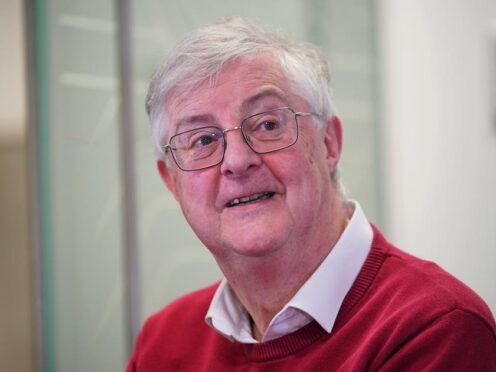
The First Minister of Wales believed the UK Government would be in charge of the country’s pandemic response until just days before the first lockdown, an inquiry has heard.
Mark Drakeford, the outgoing leader of the Senedd, was under the impression the Welsh Government would not be making decisions to prevent the spread of coronavirus itself due to the type of legislation being used in Parliament.
The UK Covid-19 Inquiry heard the First Minister only discovered the country would be in control on March 20, three days before the first lockdown was announced.
Tom Poole KC, the lead counsel for the inquiry, said reports submitted by Professor Dan Wincott, an expert on Welsh Government decision-making, suggested this outcome was “not one that the First Minister anticipated”.
The inquiry heard the Welsh Government initially believed Parliament would use powers in the Civil Contingencies Act (CCA) to implement protections against the pandemic, such as the first lockdown.
The CCA puts the UK Government in charge of decision-making, with devolved administrations left to implement them.
Today, we hear evidence from Prof Dan Wincott, Prof Sir Ian Diamond, Stephanie Howarth and Dr Robert Hoyle.
Watch live from 10:00 (with a three minute delay) on our 📺YouTube channel 👇👇https://t.co/n03rrwuLGm pic.twitter.com/CbZoAMApVZ
— UK Covid-19 Inquiry (@covidinquiryuk) February 29, 2024
However, because Covid-19 was not considered an “unforeseen event” the CCA could not be used.
Instead, public health powers were drawn on, meaning the devolved governments, including in Wales, oversaw their own responses.
Mr Poole said the First Minister agreed with the decision to use public health rules, which would allow Wales to “reflect the particular circumstances” of the country, but the UK Government’s decision was “not formally made until March 20”.
Prof Wincott agreed Mr Drakeford had assumed any “primary decision-making power” would remain with the UK Government.
“That certainly seems to be the First Minister’s understanding of the situation,” he said.
Prof Wincott added this was a “widespread view” among other devolved nations but there was a “lack of clarity” in early pandemic decision-making.
Boris Johnson said in his response to a previous section of the inquiry that his government should have thought harder about the legal basis for the measures to prevent different rules in the four nations of the UK.
Prof Wincott described the overlap of policies between UK and Welsh government rule as having “jagged edges”.
He also spoke of “blame games” between the two governments over policy and “confusion over accountability” for the public.
The professor also said that Wales suffered because it does not have “a strong Wales-focused media” with the national newspapers being “essentially the London editions” while Scotland gets its own.
He described this as having “all sorts of implications for communication” in the pandemic.
However, when asked if the Welsh government had an effective public health communication strategy during the pandemic, Prof Wincott said it did “overall” but there were “specific examples of mishandled issues”, for example around the “firebreak” lockdown.
The hearing continues.

Enjoy the convenience of having The Sunday Post delivered as a digital ePaper straight to your smartphone, tablet or computer.
Subscribe for only £5.49 a month and enjoy all the benefits of the printed paper as a digital replica.
Subscribe